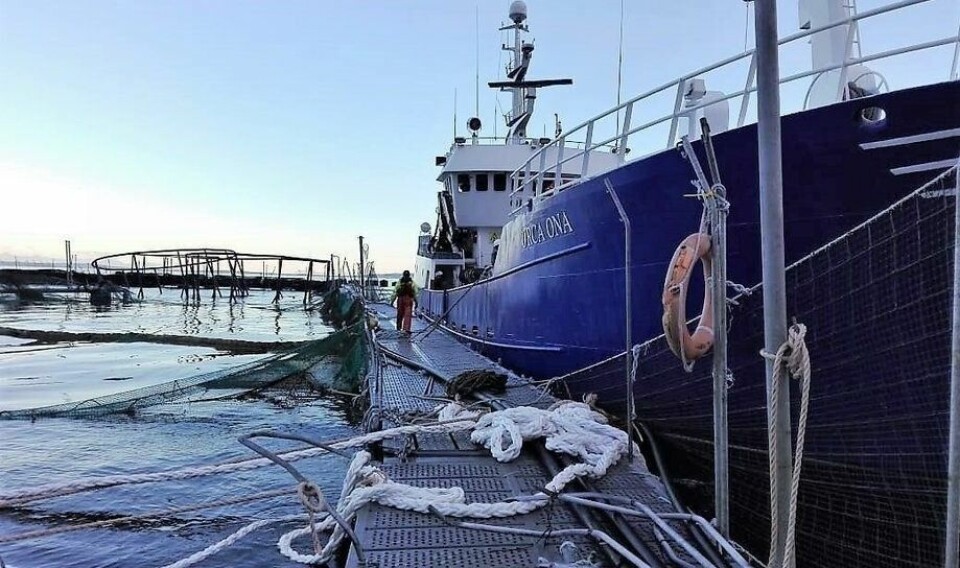
Marine Harvest claims 27% recapture after mass escape
Marine Harvest has declared that 27.23% of the salmon that escaped from one of its farms in Chile during storms in July have been recaptured.
If authorities accept the figure, Marine Harvest would avoid the prospect of fines of up to £6.2 million for causing environmental damage, which is deemed to have occurred if fewer than 10% of escaped fish are recaptured.
But the information provided by the company contrasts with that of Chile’s National Fisheries and Aquaculture Service, Sernapesca, which says that Marine Harvest managed to recapture only 5.54% of its 690,277 escaped fish.
Deadline
The legal deadline for recapturing at least 10% of the salmon that escaped from the Punta Redonda site, located in the Los Lagos Region, was reached on September 15, when the 30-day extension granted after the initial 30-day period ended.
On September 14, Marine Harvest presented a 200-page document to authorities providing the data about its direct recapture of salmon and additionally the salmon captured by artisanal fishermen and in other ways of various individuals.
Sernapesca told Fish Farming Expert’s Chilean sister site, Salmonexpert.cl, that Marine Harvest claimed that it recaptured 27.23% of the escaped salmon – a total of 187,949 fish – taking into account the direct captures recorded by the auditing authority and also the indirect ones, which were evidenced by statements from artisanal fishermen and others who had captured the fish.

Official measurement
However, Sernapesca issued a report yesterday to the Superintendency of the Environment (SMA), with figures quite different from those given by Marine Harvest Chile. It claims that the company recaptured only 5.54% of escaped salmonids – a total of 38,209 fish. “That is what the company achieved in this process, according to our measurement officiated at the SMA,” said Sernapesca’s Los Lagos region director, Eduardo Aguilera.
Sernapesca will therefore analyse the company’s report, taking into account how different its numbers are compared to those of Marine Harvest, and will decide on the issue in detail at the beginning of next week.
Aguilera said the SMA must evaluate the environmental damage caused by the fish escape and decide on sanctions if it is determined that the company did not meet the minimum of 10% recapture.
One of the sanctions that the company could face has to do with the repeal of the Environmental Qualification Resolution of the farm site, which in practice implies not being able to operate.
2.8 billion-peso fine
If the environmental damage is serious, the fines could exceed 2,800 million pesos (£3m) and if it is very serious, over 5,600 million pesos (£6.2m). If it is mild, mitigation measures and minor sanctions are applied to the company.

Marine Harvest said in a press release that the information had been supplied to Sernapesca “with strict adherence to the truth, in good faith and with transparency. The numbers of direct capture fish and the data that accredits the indirect capture that has been reliably documented were delivered in the final accounting of the recapture process. It will be the authority or the courts of justice who will evaluate this background and apply, within the framework of the current law, the criteria and the corresponding decisions.”
Earlier this month Marine Harvest Chile general manager Fernando Villarroel highlighted the role played by artisanal fishermen in the area in the recapture process, pointing out that the company hired an independent consultant to find out the number of fish recovered by individuals.
“This has been achieved with photographic, audio-visual and documentary records, which will be an important precedent for the final accounting that should be handed over to the authorities,” said Villarroel.























































